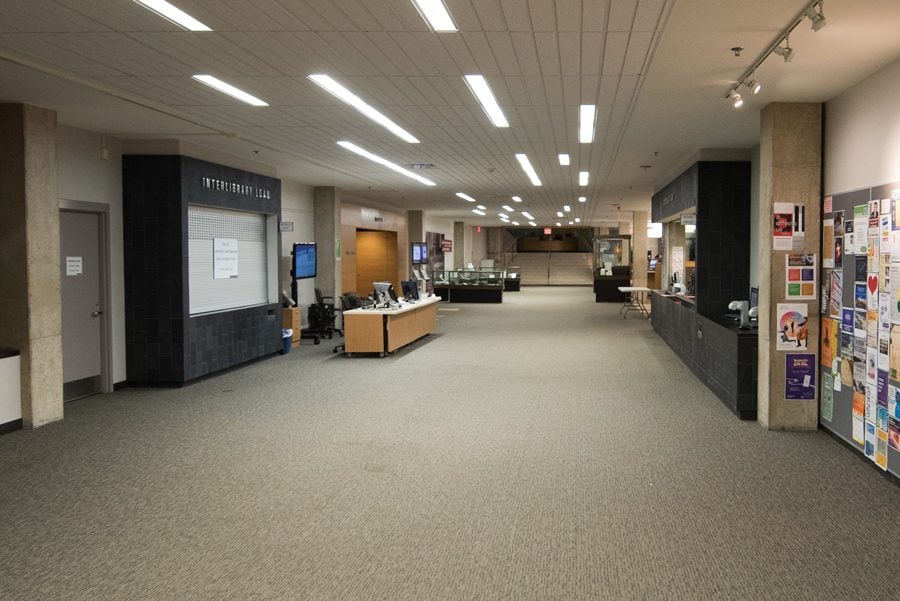Inaugural design challenge to allow students to redesign study room
Daily file photo by Colin Lynch
Main Library. Students are competing to redesign a project room.
November 27, 2018
Student teams submitted their designs on Wednesday for the inaugural Big Ten Student Design Challenge. The challenge, created by the Big Ten Academic Alliance in partnership with furniture-maker Herman Miller, asked students to design the renovation of Project Room A in Main Library 1 South.
Students teamed up in groups of three or four, and the winning team from the Big Ten teams will receive $2,000 and have their proposal built with furniture provided by Herman Miller.
Harlan Wallach, Northwestern’s IT director of media and design, worked with BTAA and Herman Miller to create the challenge. Each year the challenge will revolve around redesigning a different space, such as common rooms and classrooms, Wallach said. The annual competition represents a large-scale opportunity for students to apply design skills outside of coursework in design classes to shape a campus study space.
“That’s for me the most exciting part — we’re turning to the students to ask them to inform us and define what an informal learning space would look like,” Wallach said. “I have the greatest confidence in our students to deliver something pretty special.”
After one team is chosen from every Big Ten university, judges will select three to go on a two-day trip to the Herman Miller headquarters in Grand Rapids, Michigan. The three teams will present their proposals and receive feedback before submitting a revised version of their designs to be judged, after which one will be chosen as the winner, Wallach said.
McCormick senior Vivien Ng, a manufacturing and design engineering major, said she saw the competition as a rare chance to work with interior design. Early on, her team of three gathered in Project Room A to understand what the glass-walled study space lacked and create a theme for their design, she said.
“I’m pretty excited,” Ng said. “It’s not common that students get the chance to design an interior space — you need to have your own house and decorate it yourself, or you need a license. It’s a good opportunity for people to exercise their design skills and add designs to their portfolio.”
Ng’s team began brainstorming layouts after they talked to students in a shortened user research process. Ng said they found that students wanted a flexible room that accommodated group and individual work and had a “light and minimalist feel” without having an atmosphere that feels too sterile.
Pam Daniels, a clinical assistant professor and design innovator in residence and a judge for submissions from Northwestern students, said she was excited for students to apply their design skills “beyond what the classroom requires them.” She said she hopes the challenge will push the University toward broader engagement with students on design across the campus.
“The bigger lesson for the university I hope will be the notion of, ‘Wow, maybe we should engage students in the design process — what if we co-created with our users?’” Daniels said. “I’d love to see that happen for everything about the way the university works — to have it be more invitational, participatory and user-centered.”
Daniels said she hopes that in future years, the challenge will move beyond interior design to other disciplines like visual design for websites or graphics. Students could be pushed further with more innovative prompts, she said, such as designing specifically for people with disabilities or professors.
“A lot of the design work we do is across lines of difference — you might be helping someone who suffered a stroke and lost used of one arm learn how to fish again,” Daniels said. “That’s probably not a problem that many of our students have faced, and giving them that opportunity to design for someone who’s not them is very powerful.”
A previous version of this article misstated Harlan Wallach’s title. He is Northwestern’s IT director of media and design. The Daily regrets the error.
Email: [email protected]
Twitter: @alexalwwong


